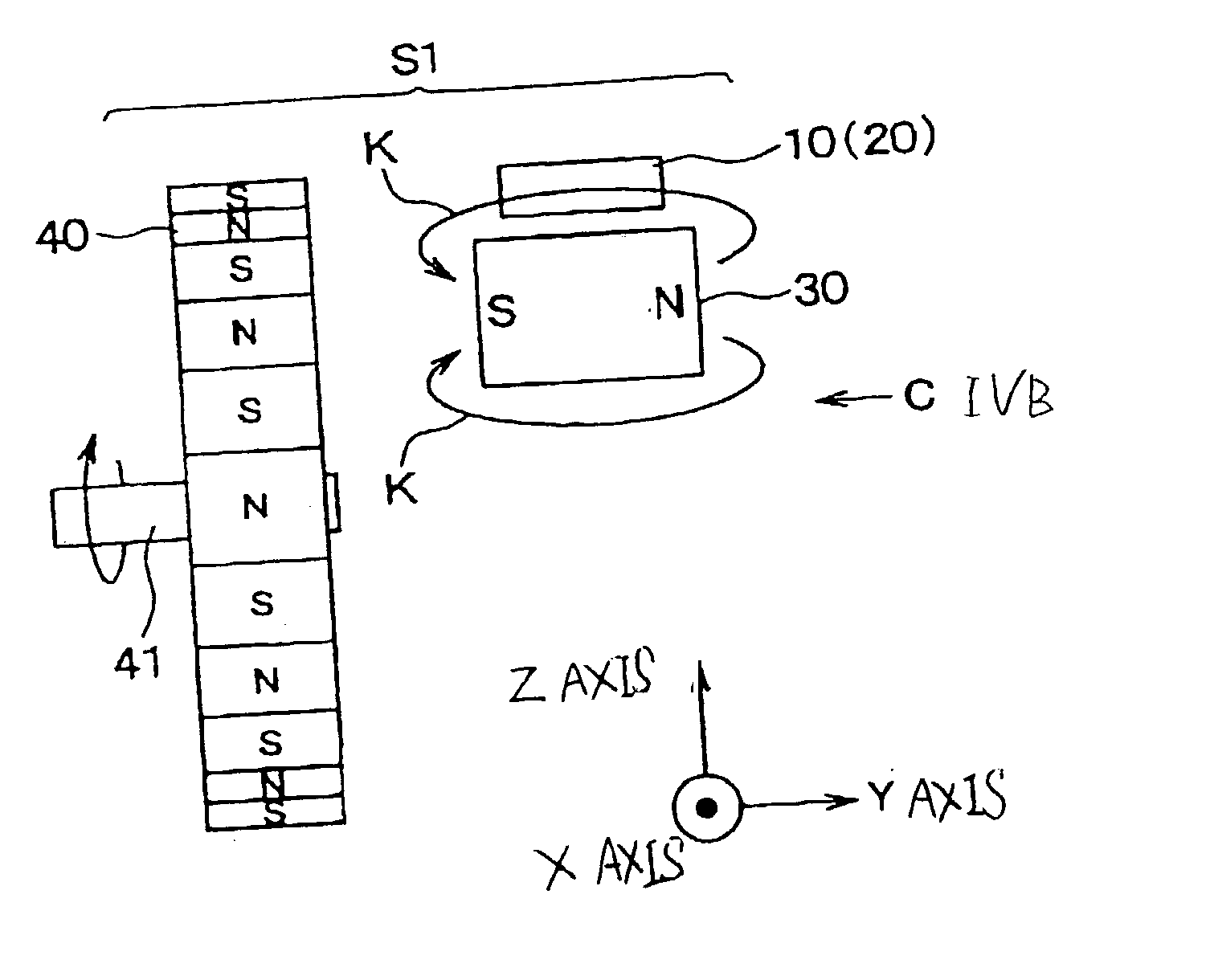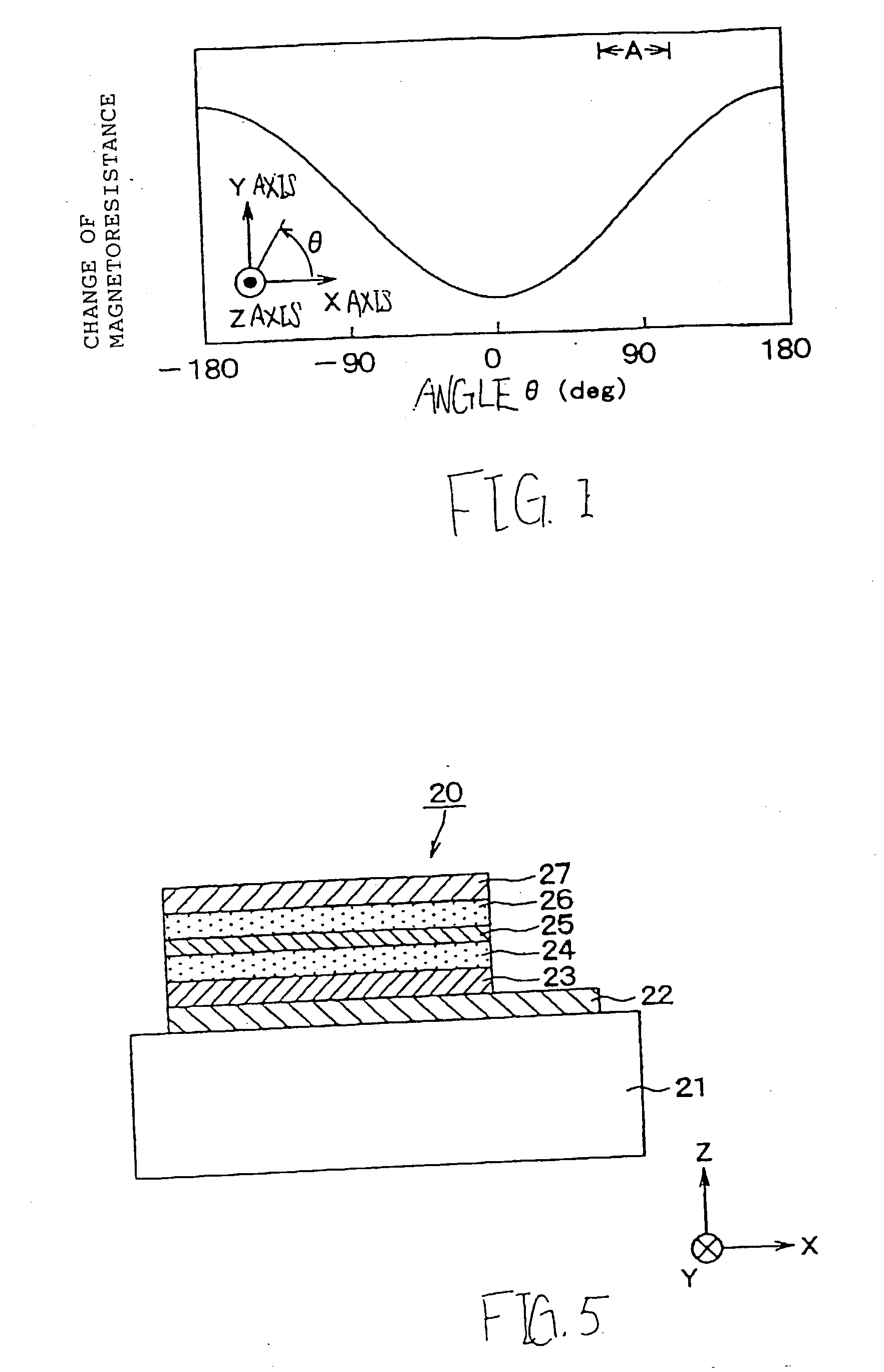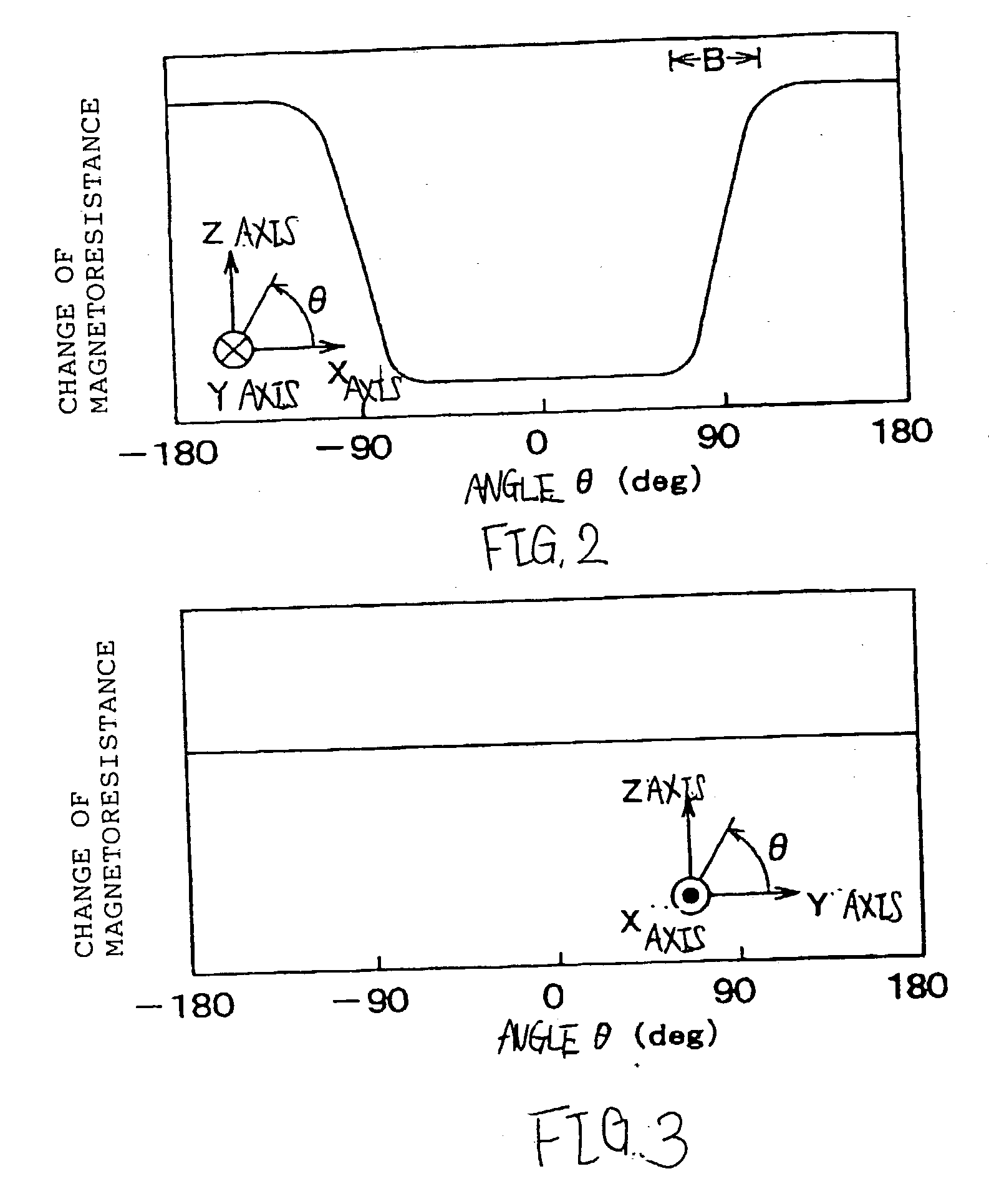Revolution detecting device
- Summary
- Abstract
- Description
- Claims
- Application Information
AI Technical Summary
Benefits of technology
Problems solved by technology
Method used
Image
Examples
first embodiment
[0064] (First embodiment)
[0065] FIG. 4A is a view showing a structure of a revolution detecting device S1 according to a first embodiment of the invention, and FIG. 4B is a view showing the revolution detecting device S1 on arrow IVB.
[0066] As shown in FIGS. 4A and 4B, the revolution detecting device S1 comprises a tunneling magnetoresistance sensor (TMR sensor) 10 with an element 20 having a laminated structure, a magnet 30 disposed in the vicinity of the TMR sensor 10, and a discotic magnetic rotor 40.
[0067] FIG. 5 is a cross sectional view of the element 20 of the TMR sensor 10 taken on its laminating direction according to the first embodiment of the invention.
[0068] As shown in FIG. 5, the element 20 of the TMR sensor 10 comprises a substrate 21 composed of, for example, silicon substrate or the like, a bottom electrode 22 laminated on the substrate 21, a pining layer 23 composed of antiferromagnetism film and laminated on the bottom electrode 22, a pinned layer 24 composed of ...
second embodiment
[0100] (Second embodiment)
[0101] FIG. 7 is a view showing a structure of a revolution detecting device S2 according to a second embodiment of the invention. In the second embodiment, different points of the revolution detecting device S2 with respect to the revolution detecting device S1 according to the first embodiment are mainly explained and as other points which are the same of the revolution detecting device S1, descriptions are simplified or omitted.
[0102] As shown in FIG. 7, the magnetic rotor 40 is disposed in the vicinity of the element 20 of the TMR sensor 10 in the Z direction from the viewpoint of the element 20. The magnet 30 is disposed in the vicinity of the element 20 so that the direction of the magnetic field K generated by the magnet 30 is substantially parallel to the Z axis at the center portion of the element 20.
[0103] The magnetic rotor 40 is arranged so that a tangential line of one end of the circumferential side surface of the rotor 40 substantially equals...
third embodiment
[0119] (Third embodiment)
[0120] FIG. 9 is a view showing a structure of a revolution detecting device S3 according to a third embodiment of the invention. In the third embodiment, the revolution detecting device S3 is modified from the revolution detecting device shown in FIGS. 4A and 4B so that the magnet 30 is omitted. Other elements of the revolution detecting device S3 are the same of the revolution detecting device S1 so that descriptions of other elements are simplified or omitted.
[0121] When the magnetic rotor 40 revolves together with the rotor shaft 41, the S poles and the N poles of the magnetic rotor 40 move on the Y axis of the element 20 in substantially parallel to the X axis so that the magnetic field generated by the N poles and S poles of the magnetic rotor 40 revolves in a plane parallel to the X-Y plane.
[0122] That is, in the third embodiment, similar to the first embodiment, using the range of region A shown in FIG. 1 in which the magnetoresistance rapidly change...
PUM
 Login to View More
Login to View More Abstract
Description
Claims
Application Information
 Login to View More
Login to View More - R&D
- Intellectual Property
- Life Sciences
- Materials
- Tech Scout
- Unparalleled Data Quality
- Higher Quality Content
- 60% Fewer Hallucinations
Browse by: Latest US Patents, China's latest patents, Technical Efficacy Thesaurus, Application Domain, Technology Topic, Popular Technical Reports.
© 2025 PatSnap. All rights reserved.Legal|Privacy policy|Modern Slavery Act Transparency Statement|Sitemap|About US| Contact US: help@patsnap.com



